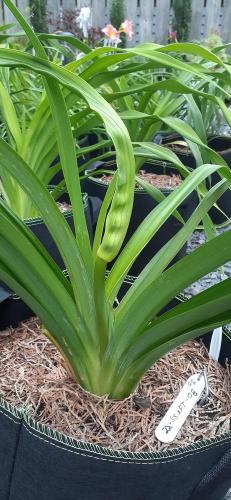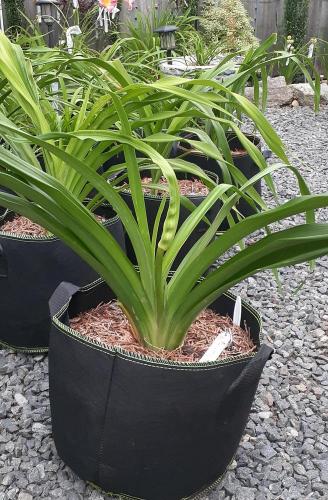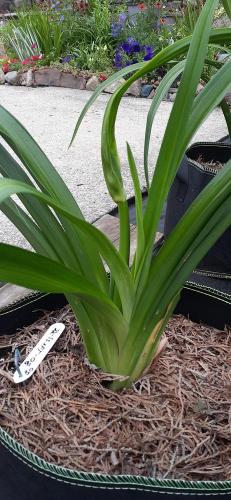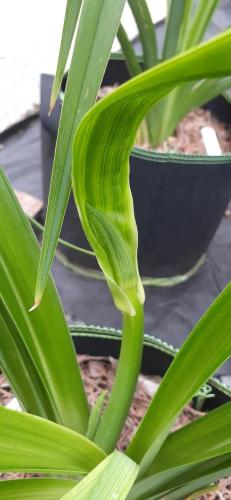Thank you
@Passionate4gardening.
Yes, the environment when the seed is developing can affect its characteristics. In some cases (it is known to happen in other plant species) the environment that the pod parent experiences even before any seed start to develop can affect the seed characteristics. We do not know if that is the case with daylilies for either of those situations.
There are at least several factors that may affect a seed or a seedling surviving winter in a location with a cold climate. The actual temperatures that the seed or seedling can survive is one factor. That temperature can depend on whether the change in temperature is abrupt or slow and how large the temperature changes are. As well the length of the winter is important. A seedling before its first winter must grow well enough to store sufficient "resources" to survive the winter and to sprout well in the following spring. Seedling mortality of plants in general is highest the first winter. The longer the seedling is able to grow before winter arrives the more resources it should be able to store and the better able it should be to acclimate to cold temperatures and survive winter.
One of the factors that may determine the fate of a seed is whether it is "dormant" or not. This is a characteristic of the seed and the conditions it experienced while developing on the pod parent. It is not necessarily associated with the registered foliage characteristics of the parents in the locations that they were hybridized.
I am assuming that since you purchased the seeds you do not grow the parents in your garden. That assumption means you do not know how hardy the parents would be in your location and growing conditions.
Biology is usually not simple. What I am going to write about in the next section may complicate matters.
In the past, say 80 years ago the foliage registration categories would have been a reasonable first guess for whether a daylily would be very cold hardy or not necessarily so. That is because different daylily species had different characteristics and were native to different locations with different climates. Some of their characteristics would be related to those "home" ranges. "Evergreen" daylilies would have had warmer climates to contend with than "deciduous" daylilies and their cold hardiness would likely have been matched with their foliage characteristics. However, cold hardiness and foliage are not the same characteristic. They can become completely independent when the different species are crossed together and many generations are produced. That happened with daylilies. So cold hardiness and registered foliage characteristics will have become independent - a daylily registered as "evergreen" could be more cold hardy than a daylily registered as "deciduous" (or "dormant").
However, as daylilies became more popular daylily hybridizers grew in numbers and locations with some hybridizers moving from cold winter locations to warm winter locations. Hybridizing any plant in a warm winter location will change its characteristics, particularly its cold hardiness. Unless the hybridizer takes steps to counter that change the cold hardiness of the breeding population of their daylilies will lessen over time. Their breeding populations will become adapted to the environment in their locations. One more Northern hybridizer and one more Southern hybridizer saw that happening with their daylilies and decided to introduce daylilies from each other into their breeding populations to counter the change. That was some time ago. Since then one would have to check each hybridizer's choice of daylilies as parents to see if they introduce daylilies from sufficiently different environments to their breeding populations to counter the natural selection and adaptation of their breeding populations to their own specific conditions (location and environment).
So
Originally there would have been a pattern between foliage characteristics and cold hardiness.
With crosses between different daylily species adapted to different environments that pattern will have been changed and possibly completely lost.
With deliberate crosses of daylilies with contrasting environmental backgrounds and possibly characteristics, that pattern can be changed and possibly completely lost.
With closed breeding populations in substantially different environments natural selection will act to adapt the daylilies to their environments. So patterns in different characteristics that are not biologically related can be created.
Last but not least, registration categories such as "dormant" and "evergreen" describe the daylily as it grows in the hybridizer's location only. They can be quite different to how the daylily grows in other locations with different conditions than those of the hybridizer's location.
What does that mean for your purchased seeds and winter. If you plant them outside I would do it as early in the year after winter as possible in your location (typically for the seeds of most plant species that is after the possibility of damaging frosts has passed). The later in the year that the seeds are planted directly outside the lower the percentage of seedlings that will survive their first winter - my prediction based on what happens with first year seedlings of other species.
For seeds that are given a head start by planting them inside I would use the same idea - that is, plant them outside when the danger of possible killing frosts is over. In this case I would wait until the danger of frost is past as much as possible unless you slowly acclimatize the seedlings to the outside environment over a period of several days, especially with very young, small seedlings.



